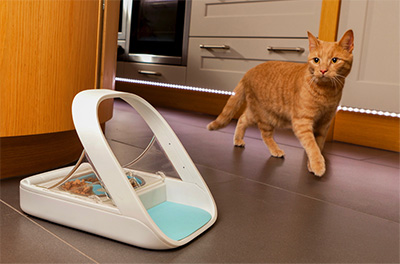Pet Diabetes: Know the Early Signs
Diabetes mellitus is increasingly common in dogs and cats. Estimated to affect between one in 200 cats and one in 300 dogs, diabetes is one of the most common endocrine disorders in pets.
Diabetes mellitus in dogs and cats results from a shortage of insulin. When your pet’s body produces little or no insulin, or if it can’t be absorbed properly, glucose (sugar) builds up in the blood instead of being used for fuel.
In dogs, the most common form of diabetes resembles type 1 diabetes in humans, while in cats, the most common form of diabetes resembles type 2 in humans although other types of diabetes also exist.iii Risk factors for diabetes include obesity (in cats) and aging. Dogs are typically diagnosed at 7 to 10 years of age, and most cats are older than 6 at diagnosis.
“Like people, dogs and cats can get diabetes. If you recognize signs like excessive thirst and unexplained weight loss, discuss it with your veterinarian,” said Linda Horspool, BVMS, PhD, DipECVPT, MRCVS, director, Global Scientific Marketing Affairs, Merck Animal Health. “Your pet can still have a happy, healthy life once their diabetes is managed.”
It is critical for family members to learn how to care for pets with diabetes, and the first step is identification and diagnosis.
Potential signs that a pet might have diabetes that pet parents can look for include:iv
- Increased thirst
- Increased urination
- Altered appetite – it can be excessive, but animals that don’t feel well may not want to eat
- Weight loss despite a good appetite
- Cloudy eyes (in dogs)
- Hind leg weakness (in cats)
- Chronic or recurring infections (including skin infections and urinary bladder infections)
Concurrent disease, such as pancreatitis in dogs and chronic kidney disease in cats, as well as advanced age can make managing this condition challenging. If diabetes is left untreated, there can be long-term complications – such as cataracts in dogs and hind limb weakness due to nerve damage in cats.iv
“The good news is that diabetes is manageable and, with regular monitoring, a daily routine that includes a healthy diet and regular exercise, and insulin treatment under the care of a veterinarian, the risk of complications can be reduced and pets with diabetes can lead longer and healthier lives,” said Dr. Horspool. “Work with your veterinarian to find the right diet and exercise regimen and most suitable insulin for your pet.”
“As veterinarians and pet owners ourselves, we understand that our dogs and cats are an important part of our families,” said Dr. Horspool. “Their health and well-being are our top priority, and we are committed to providing pet owners with resources to properly care for their four-legged family members, especially those living with chronic health conditions like diabetes.”

Need help recording your pet’s progress? MSD Animal Health’s free Pet Diabetes Tracker app can help pet owners stay on top of daily monitoring and treatment by making it simple to remember insulin injections, order repeat prescriptions, as well as to enter blood sugar levels, food and water consumption, exercise intensity and duration, body condition and body weight. The app can also be used to set reminders for medication schedules and vet appointments, and to create reports that can be shared directly with the vet by email. The app can be downloaded via the AppStore or GooglePlay.
Pet diabetes is a lifelong in most dogs and cats that requires a daily routine that includes a suitable, healthy diet (special prescription diets are often recommended), regular exercise, and insulin treatment as well as monitoring. Sure Petcare’s new pet feeder utilizes the latest technology to track eating habits and control portion size to help manage the diabetic pets.
Additional tools and resources for pet parents are available here: http://www.cat-dog-diabetes.com/
iMattin M, O’Neill D, Church D, McGreevy PD, Thomson PC, Brodbelt D. Vet Rec. 2014;174:349..
iiO’Neill DG, Gostelow R, Orme C, Church DB, Niessen SJ, Verheyen K, Brodbelt DC. J Vet Intern Med. 2016;30:964-972.
iiiGilor C, Niessen SJ, Furrow E, DiBartola SP. J Vet Intern Med. 2016;30:927-940.
ivAmerican Veterinary Medical Association. Diabetes in Pets. 2019. Available at www.avma.org
